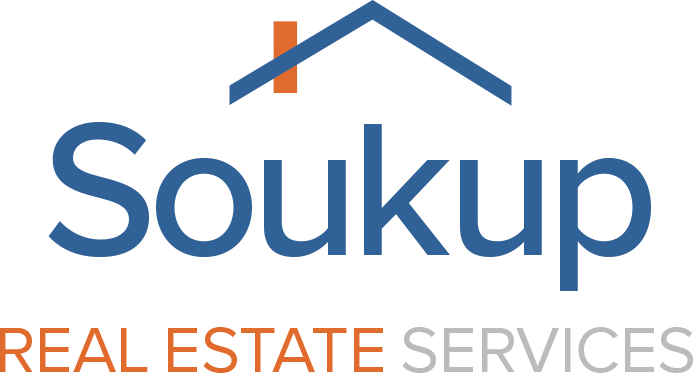You decided that you are not the biggest fan of shared walls or small multifamily properties. Instead, you have faith in the single-family market. I’ve been told by many different successful real estate investors that you MUST bring value to a deal, or value-add. That could be adding a bedroom, taking advantage of zoning, managing the asset more efficiently or maybe renovating a beater home into a beauty home.
Harder to find in a hot market, easier to find in a cold market. Fixer uppers have been made popular by HGTV. With all the beauty that is the “after” pictures and all the horror that is the “before” pictures, fixer uppers are a sexy product. You get to manage the remodel, turn something ugly into something beautiful. I think fixer uppers are a great opportunity, for some.These types of properties need to be handled with care and managed by someone who has a complete understanding prior to getting involved.
Pros
Discounted Purchase Price
If you can find a property where the owner has, for whatever reason, neglected his or her property, you may be able to purchase the property at a discounted rate. This “discount” could mean a lot of different things. You make your money on the purchase with an investment property. Never more so, then when you are buying a fixer upper.
When a property goes onto the market or Multiple Listing Service (MLS), many realtors have search criteria set up for their clients. Some have search phrases “TLC”, “Handyman Special”, “Fixer Upper”. When one of these properties comes onto the market, their clients get sent the listing. If a property goes onto the MLS, it is going to sell for the absolute highest dollar (more than likely) that the market will allow. That being said, depending on the seller’s goals, you may be able to buy at a more affordable price if you can provide a cash offer, waive your inspection, or close quickly. Finding out what the goals are of the seller is important when negotiating for a fixer upper.
Control of Finishes
If you purchase a fixer upper with the intention of turning it into a rental, your goal will be to bring it up to a good rental standard finish. New flooring, new paint, fresh counter tops and cabinets, new bathroom surrounds and vanities if needed. Your goal here will be NOT to over invest on the finishes. This is going to be a rental after all, and we all know renters can be known for NOT taking as good of care for your property as you, the owner would.
Whether you are buying the property for a long term investment or to flip the property, you are in control. What color flooring, counter tops, paint etc, will be your choice. If you are like me, that is a terrible thing. My wife and mom are my go tos for design choices. They give me color and design ideas and I work it into the budge.
Buying a fixer upper allows you to get into the rental market at a discounted original purchase price. You can upgrade over time while your renters pay your mortgage, increasing your equity in the home.
Take Advantage of The Neighborhood
Besides having all of the neighbors love you for your work in that “one” home, you will get benefit from them and their home as well. Buying the crappiest, cheapest house in a neighborhood is always a good route to be able to increase your properties value. Time and time again, we’ve discussed looking at comps and figuring out the value of your home. The most direct impact on the value of your home is the location it is at, the neighborhood it is in and the surrounding home sales prices.
You don’t want to buy a beater in a beater neighborhood necessarily. Perspective is always key. Ultimately, the comps will set the value of your home and you will want to make sure you are getting value whether you are in a luxury neighborhood or a lower end neighborhood.
Cons
Know Your Numbers
Know your numbers backwards, forwards, and blindfolded before getting involved with a fixer upper. Do you know what it costs per square yard to replace the flooring? What about the cost to paint the interior and possibly exterior? Maybe you don’t know exactly, but you have contacts who could give you rough estimates of the costs. If you are just getting started and do not have good vendor contacts, this could be a risky route to go.
If you are buying a property that requires extensive repairs to flip, your numbers MUST be dialed in. You have a little more leeway when you are buying as a long-term hold and doing repairs. Either way, you need to know the cost to purchase the property (financing costs), the total repair estimates including a contingency budge, the holding costs (finance, utility, insurance and taxes) and then finally on the back end the cost to sell the property (real estate fees, title work etc). The numbers can look amazing from afar, but once you start digging into them, generally you will find the numbers get pretty slim, pretty fast.
Market sensitivity
Fix and flips are the most vulnerable to market conditions. The idea behind a fix and flip is speed. It typically takes anywhere from 3-6 months to complete. During this time, the market could stagnate or potentially decrease. If you are trying to get in and out, you could potentially buy at the top of a cycle and need to sell while the market is decreasing. Buying, fixing up, and renting decreases this vulnerability. You are able to ride out market cycles.
I don’t want to ignore the fact that recently the market has been sizzling hot and people have benefited from delaying their flip sale. I do NOT recommend this strategy, but it is funny to explore how novice fix and flippers have benefited from being new and slow in the game.
Quick numbers:
Veteran Fix and Flipper
Purchase Price: $250,000
Repairs and Holding Costs: $50,000
Sales Price: $375,000
Closing Costs: $30,000
Profit: $45,000 Time: 90 Days from Close to Close
Novice Fix and Flipper
Purchase Price: $250,000
Repairs and Holding Costs: $50,000
Estimated Sales Price: $375,000
Closing Costs: $30,000
Estimated Profit: $45,000
Estimated Time: 90 Days from Close to Close BUT it actually takes 180 Days. With an annual 10% appreciation, the new sales price is $385,000 due to the additional 3 months of appreciation. Of course, you would have 3 months extra of holding costs, but that would not amount to more than a few thousand dollars. So for doing a poor job of time and project management, you walk away from the deal with an extra $6,000 to $7,000 profit.
I don’t recommend extending a fix and flip job, but investors in the previous 3-5 year have benefited greatly from the appreciating market.More Work than Expected
In order to get the discount, you desire, you will need to take the property “as-is”. Experience again, comes into play here. If you are unable to accurately estimate repairs on a fix and flip, this type of asset is not for you. Even when you have the experience and ability to accurately estimate repair costs, there are still surprises, and they are not usually the kind you get on your birthday. Take out the fridge to replace it only to find that it has been leaking for years and now you have to replace the kitchen floor and sub floor. $$$. Things like this happen more times than not. Hopefully, you have a contingency budgeted into your estimates and the contingency covers these not so fun surprises.
Over Rehab
Your goal here, when buying this fixer upper, is to spend the smallest amount possible while getting it to rentable standards. If Formica counter tops are all that is needed, don’t put in granite counter tops. Even though you like stainless steel appliances, if you can save $1,000 by putting in your basic white appliances while upgrading the space, do it. Just because TV shows seem to slap shiplap in every property, it just isn’t necessary. This is a business. Run it as such.
If you are buying the property to flip it for a sale, look at your comps, talk to your realtor and then do it all again to make sure you’re being realistic with your “ARV” (After Repair Value). You may be able to get a premium for a newly renovated home comparatively to the market, but make sure you are being realistic. No one is going to buy a $400,000 home in a $300,000 neighborhood.
Whether you are buying a fixer upper to flip or to hold on to as a rental there are great advantages but some pitfalls to watch out for. Talk to any investor out there and the profit is made on the buy side of things. You may get lucky and benefit from a hyper appreciating market such as many have over the past 3-5 years, but do NOT bank on it. Plan your project from the beginning. Underwrite the project conservatively and make sure to give yourself buffers for mistakes.
If you decide that fixing and flipping or fixing and holding property is the right avenue for you, have fun! It is a ton of fun to add value to the property and the neighborhood!

